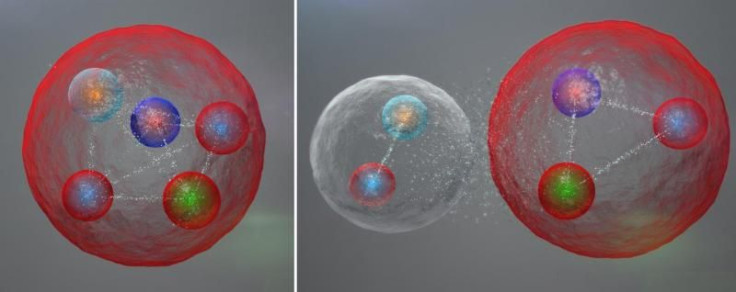Physicists Hunt For Hybrid Mesons To Understand Strong Nuclear Force And Solve The Quark Confinement Problem

Researchers associated with the Continuous Electron Beam Accelerator Facility (CEBAF) at the Department of Energy’s Thomas Jefferson National Accelerator Facility have taken the first step toward solving the problem of “quark confinement.” Their research, published in the latest edition of the journal Physical Review C, aims to study a class of particles called hybrid mesons, which are identical to ordinary mesons in composition, but are believed to exhibit drastically different behavior.
“The basic idea is that a meson is a quark and antiquark bound together, and our understanding is that the glue holds those together. And that glue manifests itself as a field between the quarks,” Curtis Meyer, a professor of physics at Carnegie Mellon University and spokesperson for the Gluonic Excitations Experiment (GlueX) at Jefferson Lab, explained in a statement released Wednesday. “A hybrid meson is one with that strong gluonic field being excited.”
Read: Pentaquark Discovery Confirmed
Quarks, the fundamental particles that make up protons and neutrons, come in six different “flavors” — up, down, strange, top, bottom and charm. Each quark has an anti-matter equivalent known as antiquark. Both protons and neutrons — contained within the nucleus of an atom — are made up of three quarks bound together.
The elementary particle that holds quarks together — and also acts as an exchange particle for the strong nuclear force — is called gluon. This “glue” is what allows subatomic particles like mesons and baryons to exist. In the case of the hypothesized hybrid mesons, this glue behaves differently, resulting in the gluonic field becoming excited.
“We hope to show that this ‘excited’ gluonic field is an important constituent of matter. That's something that has not been observed in anything that we've seen so far. So, in some sense, it's a new type of hadronic matter that has not been observed,” Meyer said.
So far, data collected over a two-week period last year shows that the GlueX experiment succeeded in producing ordinary mesons called the neutral pion and the eta. The study examined the production mechanism of the two particles and looked at the simplest mesons that can be created in the CEBAF accelerator.
The researchers hope that the eventual detection of hybrid mesons would help us expand our understanding of how the strong nuclear force — the least understood of the four known fundamental forces — works, which, in turn, would allow us to better understand the fundamental particles that make up ordinary matter, including protons and neutrons.
“I'm sure that we've produced hybrid mesons already, we just don't have enough data to start looking for them yet,” Meyer said. “There are a number of steps that we're going through in terms of understanding the detector and our analysis. We're doing the groundwork now, so that we'll have confidence that we understand things well enough that we can validate results we'll be getting in the future.”
© Copyright IBTimes 2024. All rights reserved.






















